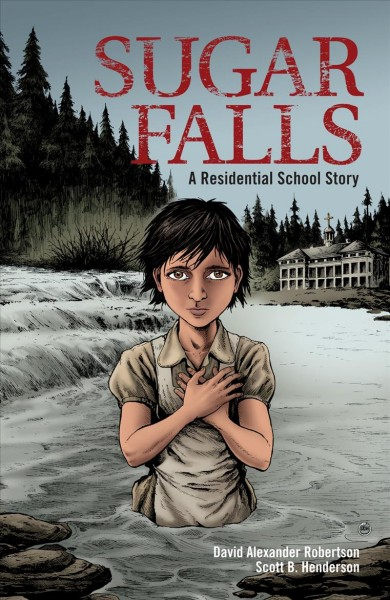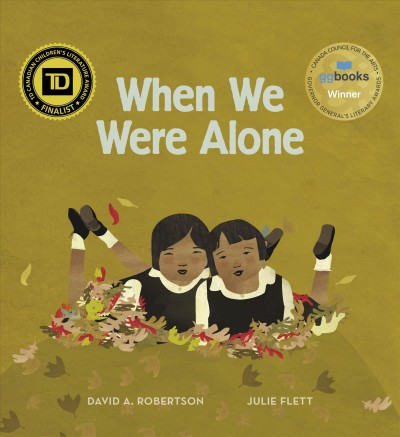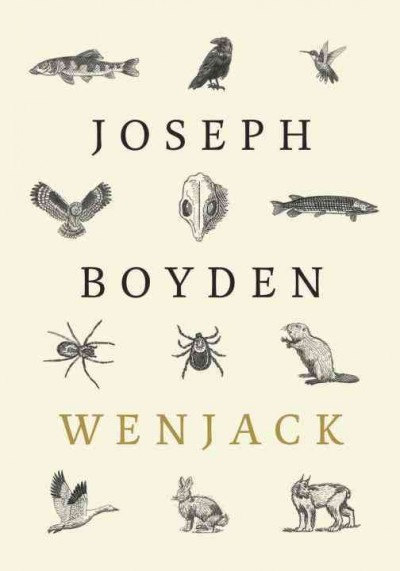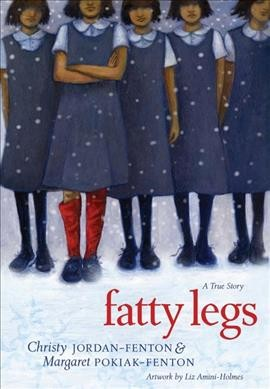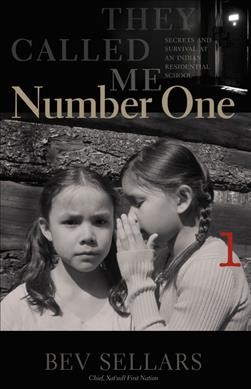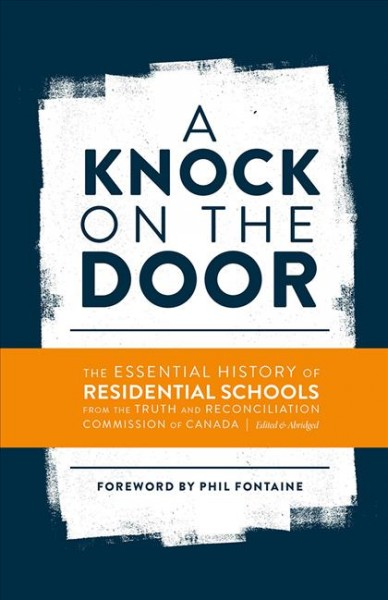Each year, September 30 marks the National Day for Truth and Reconciliation.
The day honours the children who never returned home and Survivors of residential schools, as well as their families and communities. Public commemoration of the tragic and painful history and ongoing impacts of residential schools is a vital component of the reconciliation process. (canada.ca)
We wanted to share some books with you so you can learn more about this holiday and why it is necessary. To place a book on hold, click on the title to go to our online catalogue and, as always, if you have any questions, please contact your local branch.
Residential SchoolsDiscusses the history of residential schools, including why the government established them, how Indigenous children were treated, and the lasting impact on Indigenous cultures and traditions.
Residential Schools
Over more than 100 years, the Canadian government took 150,000 First Nations, Métis, and Inuit children from their families and placed them in residential schools. In these schools, young people were assigned a number, forced to wear European-style clothes, forbidden to speak their native language, required to work, and often subjected to physical and psychological abuse. If they tried to leave the schools to return to their families, they were captured by the RCMP and forced back. Run by churches, the schools were paid for by the federal government. The last residential school closed in 1996. It took decades for people to speak out in public about the devastating impact of residential schools. School Survivors eventually came together and launched court actions against the federal government and the churches. In 2008 the Canadian government apologized for the historic wrongs committed by the residential school system. The survivors’ lawsuits led to the Indian Residential Schools Settlement Agreement, the largest class-action settlement in Canadian history, and the establishment of the Truth and Reconciliation Commission. The Commission spent six years gathering testimony and discovering the facts about residential schools. This book includes the text of the government’s apology and summarizes the Truth and Reconciliation Commission’s 94 Calls to Action, which offer the basis for a new relationship between the Canadian government, Indigenous people and non-Indigenous people.
St. Michael's Residential School
One of the few accounts by care-givers in an Indian Residential School describing the horrific conditions. Nancy Dyson and Dan Rubenstein In 1970, the authors, Nancy Dyson and Dan Rubenstein, were hired as childcare workers at the Alert Bay Student Residence (formerly St. Michael's Indian Residential School) on northern Vancouver Island. Shocked when Indigenous children were forcibly taken from their families, punished for speaking their native language, fed substandard food and severely disciplined for minor offences, Dan and Nancy questioned the way the school was run with its underlying missionary philosophy. When a delegation from the Department of Indian and Northern Affairs visited St. Michael's, the couple presented a long list of concerns, which were ignored. The next day they were dismissed by the administrator of the school. Some years later, in 2015, the Truth and Reconciliation Commission Reports were released. The raw grief and anger of residential school survivors were palpable and the authors' troubling memories of St. Michael's resurfaced. Dan called Reconciliation Canada, and Chief Dr. Robert Joseph encouraged the couple to share their story with today's Canadians. St. Michael's Residential School: Lament and Legacy is a moving narrative - one of the few told by caregivers who experienced on a daily basis the degradation of Indigenous children. Their account will help to ensure that what went on in the Residential Schools is neither forgotten nor denied.
Since the 1980s successive Canadian institutions, including the federal government and Christian churches, have attempted to grapple with the malignant legacy of residential schooling, including official apologies, the Royal Commission on Aboriginal Peoples, the Indian Residential Schools Settlement Agreement, and the Truth and Reconciliation Commission (TRC). In Residential Schools and Reconciliation, award winning author J.R. Miller tackles and explains these institutional responses to Canada's residential school legacy. Analyzing archival material and interviews with former students, politicians, bureaucrats, church officials, and the Chief Commissioner of the TRC, Miller reveals a major obstacle to achieving reconciliation--the inability of Canadians at large to overcome their flawed, overly positive understanding of their country's history. This unique, timely, and provocative work asks Canadians to accept that the root of the problem was Canadians like them in the past who acquiesced to aggressively assimilative policies.
Sugar Falls
BASED ON A TRUE STORY* A school assignment to interview a residential school survivor leads Daniel to Betsy, his friend's grandmother, who tells him her story. Abandoned as a young child, Betsy was soon adopted into a loving family. A few short years later, at the age of 8, everything changed. Betsy was taken away to a residential school. There she was forced to endure abuse and indignity, but Betsy recalled the words her father spoke to her at Sugar Falls — words that gave her the resilience, strength, and determination to survive. Sugar Falls is based on the true story of Betty Ross, Elder from Cross Lake First Nation. We wish to acknowledge, with the utmost gratitude, Betty's generosity in sharing her story.
When We Were Alone
Helping her grandmother tend her garden, a young girl asks her First Nations forebear why she wears bright colors and has long hair, so her grandmother tells her about her youth in a residential school where all of these things were taken away.
An Ojibwe boy runs away from a North Ontario Indian School. Along the way he's followed by Manitous, spirits of the forest who comment on his plight, cajoling, taunting, and ultimately offering him a type of comfort on his difficult journey back to the place he was so brutally removed from.
A courageous and intimate chronicle of a young boy's life in an Indian residential school.
Bestselling memoir Fatty Legs for younger readers. Olemaun is eight and knows a lot of things. But she does not know how to read. Ignoring her father's warnings, she travels far from her Arctic home to the outsiders' school to learn. The nuns at the school call her Margaret. They cut off her long hair and force her to do menial chores, but she remains undaunted. Her tenacity draws the attention of a black-cloaked nun who tries to break her spirit at every turn. But the young girl is more determined than ever to learn how to read. Based on the true story of Margaret Pokiak-Fenton, and complemented by stunning illustrations, When I Was Eight makes the bestselling Fatty Legs accessible to younger readers. Now they, too, can meet this remarkable girl who reminds us what power we hold when we can read.
Twelve-year-old Violet Pesheens is taken away to Residential School in 1966. The diary recounts her experiences of travelling there, the first day, and first months, focusing on the everyday life she experiences--the school routine, battles with Cree girls, being quarantined over Christmas, getting home at Easter and reuniting with her family. When the time comes to gather at the train station for the trip back to the residential school, her mother looks her in the eye and asks, "Do you want to go back, or come with us to the trapline?" Violet knows the choice she must make.
Chanie, misnamed Charlie by his teachers, was a young boy who died on October 22, 1966, walking the railroad tracks, trying to escape from the Cecilia Jeffrey Indian Residential School to return home. Chanie’s home was 400 miles away. He didn’t know that. He didn’t know where it was, nor how to find it, but, like so many kids—more than anyone will be able to imagine—he tried.
Chanie’s story is Canada’s story. We are not the country we thought we were. History will be rewritten. We are all accountable. Secret Path acknowledges a dark part of Canada’s history—the long suppressed mistreatment of Indigenous children and families by the residential school system—with the hope of starting our country on a road to reconciliation. Every year as we remember Chanie Wenjack, the hope for Secret Path is that it educates all Canadians young and old on this omitted part of our history, urging our entire nation to play an active role in the preservation of Indigenous lives and culture in Canada.
Theodore Fontaine lost his family and freedom just after his seventh birthday, when his parents were forced to leave him at an Indian residential school by order of the Roman Catholic Church and the Government of Canada. Twelve years later, he left school frozen at the emotional age of seven. He was confused, angry and conflicted, on a path of self-destruction. At age 29, he emerged from this blackness. By age 32, he had graduated from the Civil Engineering Program at the Northern Alberta Institute of Technology and begun a journey of self-exploration and healing. In this powerful and poignant memoir, Theodore examines the impact of his psychological, emotional and sexual abuse, the loss of his language and culture, and, most important, the loss of his family and community. He goes beyond details of the abuses of Native children to relate a unique understanding of why most residential school survivors have post-traumatic stress disorders and why succeeding generations of First Nations children suffer from this dark chapter in history.
Finding My Talk
When residential schools opened in the 1830s, First Nations envisioned their own teachers, ministers, and interpreters. Instead, students were regularly forced to renounce their cultures and languages and some were subjected to degradations and abuses that left severe emotional scars for generations. In Finding My Talk, fourteen aboriginal women who attended residential schools, or were affected by them, reflect on their experiences. They describe their years in residential schools across Canada and how they overcame tremendous obstacles to become strong and independent members of aboriginal cultures and valuable members of Canadian society.
Margaret, a young Inuit girl begs her father to let her go to the outsiders' school. Before finally relenting, he warns her, as water wears rock smooth, her spirit will be worn down and made small. She soon encounters the Raven, a nun who immediately disapproves of the strong-willed young girl. To prove her dislike, the Raven passes out gray stockings to all except Margaret, who receives red ones. In an instant Margaret is the laughingstock of the school. Now she must face her tormentor.
For over 100 years, thousands of Aboriginal children passed through the Canadian residential school system. Begun in the 1870s, it was intended, in the words of government officials, to bring these children into the "circle of civilization," the results, however, were far different. More often, the schools provided an inferior education in an atmosphere of neglect, disease, and often abuse. Using previously unreleased government documents, historian John S. Milloy provides a full picture of the history and reality of the residential school system. He begins by tracing the ideological roots of the system, and follows the paper trail of internal memoranda, reports from field inspectors, and letters of complaint. In the early decades, the system grew without planning or restraint. Despite numerous critical commissions and reports, it persisted into the 1970s, when it transformed itself into a social welfare system without improving conditions for its thousands of wards. A National Crime shows that the residential system was chronically underfunded and often mismanaged, and documents in detail and how this affected the health, education, and well-being of entire generations of Aboriginal children.
Xat’sull Chief Bev Sellars spent her childhood in a church-run residential school whose aim it was to 'civilize' Native children through Christian teachings, forced separation from family and culture, and discipline. In addition, beginning at the age of five, Sellars was isolated for two years at Coqualeetza Indian Turberculosis Hospital in Sardis, British Columbia, nearly six hours’ drive from home. The trauma of these experiences has reverberated throughout her life. The first full-length memoir to be published out of St. Joseph’s Mission at Williams Lake, BC, Sellars tells of three generations of women who attended the school, interweaving the personal histories of her grandmother and her mother with her own. She tells of hunger, forced labour, and physical beatings, often with a leather strap, and also of the demand for conformity in a culturally alien institution where children were confined and denigrated for failure to be White and Roman Catholic. Like Native children forced by law to attend schools across Canada and the United States, Sellars and other students of St. Joseph’s Mission were allowed home only for two months in the summer and for two weeks at Christmas. The rest of the year they lived, worked, and studied at the school. St. Joseph’s mission is the site of the controversial and well-publicized sex-related offences of Bishop Hubert O’Connor, which took place during Sellars’s student days, between 1962 and 1967, when O’Connor was the school principal. After the school’s closure, those who had been forced to attend came from surrounding reserves and smashed windows, tore doors and cabinets from the wall, and broke anything that could be broken. Overnight their anger turned a site of shameful memory into a pile of rubble. In this frank and poignant memoir, Sellars breaks her silence about the institution’s lasting effects, and eloquently articulates her own path to healing.

This nonfiction book, illustrated with photographs, tells the story of the making of the Witness Blanket, a work by Indigenous artist Carey Newman that includes hundreds of items from every Residential School in Canada and stories from the Survivors who donated them.
Drama and humour combine in Goodbye Buffalo Bay by award-winning Cree author Larry Loyie. The sequel to the award-winning book As Long as the Rivers Flow and the award-finalist When the Spirits Dance, Goodbye Buffalo Bay is set during the author's teenaged years. In his last year in residential school, Lawrence learns the power of friendship and finds the courage to stand up for his beliefs. He returns home to find the traditional First Nations life he loved is over. He feels like a stranger to his family until his grandfather's gentle guidance helps him find his way. New adventures arise; Lawrence fights a terrifying forest fire, makes his first non-Native friends, stands up for himself in the harsh conditions of a sawmill, meets his first sweetheart and fulfills his dream of living in the mountains. Wearing new ice skates bought with his hard-won wages, Lawrence discovers a sense of freedom and self-esteem. Goodbye Buffalo Bay explores the themes of self-discovery, the importance of friendship, the difference between anger and assertiveness and the realization of youthful dreams.
For over a century, the central goals of Canada's Aboriginal policy were to eliminate Aboriginal governments; ignore Aboriginal rights; terminate the Treaties; and through a process of assimilation, cause Aboriginal people to cease to exist as a distinct legal, social, cultural, religious, and racial entities in Canada, the report concludes, and the establishment and operation of residential schools were a central element in this policy, which can best be described as cultural genocide. It covers the history, the school experience, the legacy, reconciliation, and calls to action.
Trailblazer. Residential school survivor. First Indigenous player in the NHL. All of these descriptions are true--but none of them tell the whole story. Fred Sasakamoose suffered abuse in a residential school for a decade before becoming one of 125 players in the most elite hockey league in the world--and has been heralded as the first Canadian Indigenous player with Treaty status in the NHL. He made his debut with the 1954 Chicago Black Hawks on Hockey Night in Canada and taught Foster Hewitt how to correctly pronounce his name. Sasakamoose played against such legends as Gordie Howe, Jean Beliveau, and Maurice Richard. After twelve games, he returned home. When people tell Sasakamoose's story, this is usually where they end it. They say he left the NHL after only a dozen games to return to the family and culture that the Canadian government had ripped away from him. That returning to his family and home was more important to him than an NHL career. But there was much more to his decision than that. Understanding Sasakamoose's decision to return home means grappling with the dislocation of generations of Indigenous Canadians. Having been uprooted once, Sasakamoose could not endure it again. It was not homesickness; a man who spent his childhood as "property" of the government could not tolerate the uncertainty and powerlessness of being a team's property. Fred's choice to leave the NHL was never as clear-cut as reporters have suggested. And his story was far from over. He continued to play for another decade in leagues around Western Canada. He became a band councillor, served as Chief, and formed athletic programs for kids. He paved a way for youth to find solace and meaning in sports for generations to come. This isn't just a hockey story; Sasakamoose's groundbreaking memoir intersects Canadian history and Indigenous politics, and follows his journey to reclaim pride in an identity that had previously been used against him.




